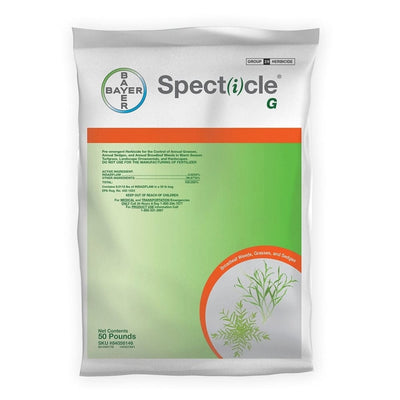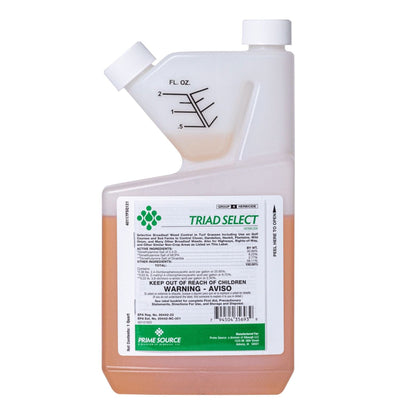Keeping your lawn lush, green, and clover-free can feel like a full-time job. One of the most common questions we hear is, "Does pre-emergent kill clover?"
It's a smart question—and the answer reveals a lot about what it takes to maintain a truly pristine yard.
Knowing how to tackle clover before it takes over your turf can mean the difference between a lawn you're proud of and one you're constantly battling.
At Lawn Synergy, we believe in empowering homeowners with professional-grade products and the expert support they need to succeed. This article will walk you through how pre-emergents work, their effect on clover, and what strategies actually lead to a perfect lawn.
What this article covers:
- What Is Clover and Why Does It Matter
- Can Pre-Emergent Kill Clover?
- Choosing the Right Pre-Emergent for Clover Control
- How to Kill Clover Without Harming Grass
- Best Timing for Clover Prevention and Control
- Managing a Clover-Friendly Lawn
- Final Tips and Recommendations
What Is Clover and Why Does It Matter
Clover, including varieties like White Clover and Red Clover, is a hardy perennial or annual plant that many lawns host.
It's known for its three-lobed leaves and its tendency to spread quickly across turf. While some homeowners appreciate its green hue and nitrogen-fixing benefits that improve soil fertility, most view clover as a nuisance that interrupts the uniform look of a well-manicured lawn.
There's a reason clover was once included in grass seed mixes. It fills in bare spots, stays green, and supports pollinators.
However, its aggressive growth and patchy appearance make it undesirable for those aiming for a clean, carpet-like lawn.
That's why understanding how to manage clover, whether you want to reduce or remove it entirely, is so essential.

How Pre-Emergent Herbicides Work
Pre-emergent herbicides are proactive, not reactive. These herbicides form a chemical barrier at the soil surface that stops weed seeds from germinating.
That means they work best when applied before weed problems begin. They don't eliminate existing plants; instead, they prevent new ones from sprouting.
They are especially effective against annual grassy and broadleaf weeds like crabgrass and spurge.
But this mode of action also means they don't impact plants that are already established above the soil, including existing clover patches.
Can Pre-Emergent Kill Clover?
In short, no, pre-emergents do not kill clover that is already growing.
If you see clover in your yard right now, applying pre-emergent will not eliminate it. The only effect pre-emergent can have on clover is to stop new clover seeds from germinating.
However, not all clovers are created equal. Annual clovers may be affected by a well-timed pre-emergent, but perennial clovers like White Clover will remain unaffected unless treated by other methods.
So, remember, it can only kill clover in its seedling stage, and not always effectively.
Choosing the Right Pre-Emergent for Clover Control
Not all pre-emergents are created equal when it comes to preventing clover from invading your lawn. The key is choosing the right product for your grass type and climate.
Isoxaben-based herbicides are some of the most reliable pre-emergents for blocking the germination of broadleaf weed seeds, including some types of annual clover.
These products are highly recommended for cool-season lawns like fescue and bluegrass, especially when applied in early spring before soil temperatures reach the 55°F threshold.
For warm-season grasses such as Bermuda or Zoysia, Specticle G Pre-Emergent is a high-performance option that delivers extended residual control across a broad range of grassy and broadleaf weeds.
However, it's a very potent formula, so precision in application is critical. Use it only with appropriate calibration and adherence to the product's labeled turfgrass tolerances.
Homeowners often ask, "Are pre-emergent herbicides safe?" The answer is yes, when handled and applied correctly.
With Lawn Synergy, we ensure you get detailed, expert-backed instructions for safe and effective use.

Post-Emergent Alternatives for Existing Clover
If clover is already established in your lawn, pre-emergents won't help. You'll need a post-emergent herbicide to remove it.
These products are designed to eliminate actively growing broadleaf weeds without harming your grass when applied correctly.
Products like Triad SELECT Broadleaf Herbicide or other formulations containing 2,4-D, MCPA, or Dicamba are effective choices. They work by disrupting the clover's internal growth processes, eventually killing the plant while leaving most turfgrasses unaffected.
It's important to select a selective herbicide that targets broadleaf plants like clover without damaging the grass species you want to keep.
Be sure to spot-treat problem areas rather than broadcast-spraying, especially if clover isn't widespread. This helps minimize impact on the rest of your lawn and reduces unnecessary chemical use.
Always follow the product label for mixing rates, application timing, and safety precautions. The best results are obtained by applying these herbicides during active clover growth, typically in spring or early fall.
Remember, effective weed control is a process. Post-emergents can be powerful, but they work best when combined with good lawn care practices like proper mowing and fertilization.
How to Kill Clover Without Harming Grass
A strong, healthy lawn is the best defense against clover and other invaders.
Start with mowing practices. Set your mower higher, around 3 to 3.5 inches for most grass types. Taller grass casts more shade, which makes it harder for clover and weed seeds to germinate and thrive.
It also encourages deeper root systems, which means more resilient turf overall.
Next, address your soil's nutrient balance. Clover thrives in low-nitrogen conditions, which often signals that your lawn needs a boost.
A balanced fertilizer tailored to your grass type can help fill that nutrient gap. With proper fertilization, your grass grows thicker and healthier, naturally crowding out weeds like clover.
Combining these cultural practices with selective herbicide treatments gives you a double edge: You're eliminating what you don't want while reinforcing what you do.
It's a practical, sustainable approach that leads to a cleaner, greener lawn season after season.

Best Timing for Clover Prevention and Control
For pre-emergents, plan to apply them in early spring or early fall, before soil temperatures consistently hit 55°F.
This is when clover seeds begin to germinate, and getting ahead of them gives you the best shot at stopping growth before it starts.
Post-emergent herbicides work best when clover is actively growing—usually mid to late spring and again in early fall. Applying when the clover is healthy ensures it absorbs the herbicide more effectively, making the treatment far more successful.
One important prep step: mow before applying pre-emergent. This helps the product reach the soil surface, where it needs to be to form an effective barrier. If you skip mowing, tall grass can block the herbicide from doing its job.
Whether you're preventing new growth or treating existing patches, syncing your application with clover's growth cycles gives you a clear advantage and sets your lawn up for better results.
Managing a Clover-Friendly Lawn
Not everyone wants a perfectly uniform lawn—and that's okay. Clover can be a great addition to your turf if you're looking for a green, low-maintenance, drought-tolerant option that also supports pollinators.
If you're going for a clover-inclusive lawn, the goal is to manage it, not fight it.
Keep your soil balanced and healthy. This helps clover stay in check without giving a foothold to more aggressive weeds.
Hand-weeding or using targeted organic treatments can help you control unwanted species without harming your clover.
Avoid fertilizers high in quick-release nitrogen, as they tend to push out clover and favor turfgrass. Instead, opt for slower-release, low-nitrogen options supporting grass and clover.
The key is balance—encouraging the plants you want, while quietly managing those you don't.

Final Tips and Recommendations
- Pre-emergents are great for prevention, but they won't touch mature clover.
- For clover seed control, use products with Isoxaben or Specticle, applied before germination windows in spring and fall.
- To get rid of existing clover, apply post-emergents like SpeedZone or a 2,4-D-based herbicide when the plant is actively growing.
- Mow your lawn on the taller side and keep soil nutrients in check, especially nitrogen, to encourage thick, competitive grass.
-
Is pre-emergent toxic, or is pre-emergent safe for dogs? Most are safe once watered in and dried. Always read and follow the label to keep pets safe and your application effective.
With a clear plan and the right tools, you can control clover on your terms, whether that means removing it completely or letting it play a role in a healthy, sustainable lawn.
Conclusion
Whether you're trying to eliminate clover or simply manage it as part of your lawn's ecosystem, success comes down to strategy and timing.
Pre-emergents help stop clover before it starts, while post-emergents tackle what's already there.
But the real key is building a lawn that's healthy enough to outcompete weeds through smart mowing, balanced fertility, and a little guidance from the right partners.
With Lawn Synergy, you're never on your own.
We combine elite, professional-grade products with expert advice tailored for homeowners. From your first application to your final mow of the season, we're here to help you grow a lawn you can brag about.
Let's get that lawn perfect, together.
If you want to learn more, check out these articles below:
-
Should You Mow Before Pre-Emergent
- When to Apply Pre Emergent in Fall
- When to Put Down Pre Emergent in Spring
- When to Apply Crabgrass Pre Emergent
- How Long Does Pre Emergent Last?
- Is It Too Late for Pre Emergent?
- Does Pre Emergent Work?
- Can I Put Pre Emergent on Wet Grass?
- How Long Does Barricase Pre Emergent Last?
- When to Apply Pre Emergent in NC
- When to Apply Pre Emergent in Georgia
- When to Apply Pre Emergent in South Carolina
- When to Apply Pre Emergent in Florida
- When to Apply Pre Emergent in Tennessee
- Soil Temp for Pre-Emergent



